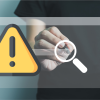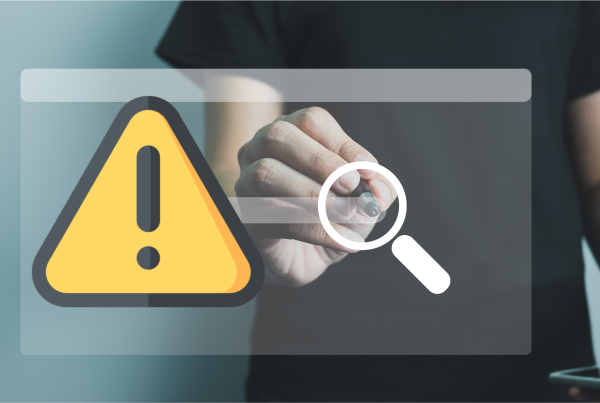Do you wish to speed up your WordPress site? Fast-loading pages enhance the user experience, increase page views, and help WordPress websites rank on the first few pages of Search Engines. With today’s visitors being more eager than ever before and increased digital competition, having a fast-loading WordPress website is essential if you want to succeed.
Everything in today’s digital world focuses on speed and efficiency. Many creators and business owners are now alert to this fact and wonder how to speed up WordPress based websites. We’ll go through the most helpful 7 Best Practices to Improve WordPress Website Performance strategies in this article to help you improve WordPress performance and speed up your website with just a few tweaks. Continue reading to learn why fast loading websites are essential and provide some strategies for improving the speed of your WordPress site.
Why is WordPress Site Speed Important?
When visitors arrive on your website, you must immediately grab their interest. If your site takes longer, users will look desperately for the back button (You probably do the same). Search engines discovered that a few seconds delay reduces a user’s site utilization on multiple visits. When your site takes a long time to load, it massively reduces consumer happiness.
However, in ways that leave crowds of happy users in your path, your site speed has a negative impact on your results, as key on-page performance metrics are influenced by site speed. You’ll get hit with the double impact of dissatisfied users and poor search engine rankings if your site is slow to load, and it’s time to fix that.
How to Test Your WordPress Website’s Speed
It’s a good idea to acquire a baseline of your WordPress site’s current performance before making adjustments to increase its performance. Even if you think your site is quick to load, it could be because you spend so much time on it. As a result, cached files will be present, and the page will load faster for you than for a new website visitor. GTMetrix and Pingdom are two tools that will offer you a solid image of your WordPress site’s current performance.
Long story short, a Faster Website =
More visitors + Engagement =
More Sales/Leads
7 Ways to Boost WordPress Website Performance

Select a Better WordPress Hosting Provider
Investing in a high-quality hosting company is one of the simplest methods to boost the performance of your WordPress site. A managed host is an excellent alternative if you’re looking for a host-based solely on performance. Managed WordPress Hosting blends shared hosting’s server manner with extra features and services. Each managed WordPress hosting company has its own set of capabilities, but they all have something in common: they allow site owners to forgo the technical side of hosting.
Our managed WordPress hosting at KnownHost has earned awards for performance, making it an excellent option for any WordPress site. KnownHost helps the customer with the server-side issues only to provide the end customer with the best possible service. We have enabled various social platforms where users can directly communicate with the staff for any help and suggestion. Our highly trained, experienced staff is available 24×7 enabling you the direct one-on-one support opportunity.

Make your images more engaging or Optimize Your Images/Media
The most common cause of the slowdown in WordPress blogs is oversized pictures. Optimizing your uploaded photos/images/media files is accordingly an important step in increasing the speed of your website. Optimizing picture files entails downsizing and compressing them to be quick and efficient. This not only further compresses photos after they’ve been uploaded, improving page speed, but it also offers several other image optimization capabilities, such as slow loading.
There are several readily available plugins in the WordPress marketplace with the Premium feature. Most Freemium plugins will get your job done with a single click, but you might go with the enterprise solution if you have an enterprise website or many media files uploaded on the server. Some of the plugins you can use for the image optimizations are Smush Image compression and Optimization., EWWW Image Optimizer, and Shortpixel Image Optimizer. If your WebHost is using LiteSpeed, take advantage of LSCache’s Image Optimizer.

Delete Unused Plugins
Plugins can slow down your site in a variety of ways. Slow website loading can be caused by poorly designed plugins, plugins with obsolete software, or surplus/duplicate plugins. The WordPress core, as well as your theme and plugins, are regularly updated. These upgrades include new features, repair bugs, and address any security flaws. You’ll increase your site’s overall performance by using the most recent WordPress components.
Furthermore, keeping your website up to date ensures that it is secure and that no known vulnerabilities threaten to bring it down. Let’s face it; nobody wants to see your website maliciously compromised.

Updating Your Core, Themes, and Plugins
WordPress will build a dynamic version of the page whenever someone visits your site. Caching will limit the number of database requests and instead offer a static HTML version of the page to your user. WordPress speed and performance can be dramatically improved with caching. Your host may have a built-in caching system in some circumstances.
Site owners who aren’t that fortunate can still benefit from caching by using caching plugins such as WP Super Cache or W3 Total Cache. It is common for hosts to use the LiteSpeed webserver on shared hosting servers, enabling the end-user to take its LsCache benefit to enhance WordPress website performance.

Use a content delivery network (CDN)
The location of your website’s server will affect how quickly it loads. Visitors to your website come from worldwide, and site loading times may differ depending on how far away they are from where your site is hosted. To further improve the response times of your WordPress site is to take advantage of a CDN (Content Delivery Network).
No matter what type of website you run, an efficient CDN can help you improve loading speeds. Cloudflare is one of the best free-to-use CDN providers, enabling users to set up a website over the CDN through a Free tier plan. Moreover, many enterprise solutions are also available in the market, which can best fit your WordPress website. Don’t forget to tweak the website before enabling the CDN.

Make use of a caching plugin
WordPress caching plugins (such as Litespeed Cache, W3 Cache and WP Rocket) has been around for a while, so applying cache rules to your website is an effortless thing to do. Depending on the hosting server, you may have a variety of database and object caching solutions available (Redis, Memcached, Opcache), which will help your WordPress website get better performance.
The cherry on the top, you can install the plugins as mentioned above and configure them with the best fit. But, while performing any cache plugin configuration, we highly recommend taking a proper backup copy of the WordPress website.

Make use of file Minifying
Minifying your files will reduce their total size and make them easier for your browser to view. The larger a file is, the longer it will take to read it, and the slower your site will load. This procedure will lower the overall amount of working files that must be handled while also cleaning up the site’s code, making it more efficient. By default, Gzip compression is the first step to getting started with the minification. Moreover, we have covered the cache plugins available in the market, enabling the more easy steps to configure the minification of the JS, CSS, and HTML code.
On the other hand, it is the most challenging task to perform code minification. You can consult with the hosting provider for any help related to the configuration. Many managed hosting providers help you get that sorted with the step-by-step producer.
Conclusion
We hope that this post has skilled you in how to increase the speed and performance of WordPress. The most important advantage of reducing your website’s loading time is that it will considerably improve the experience of your visitors. The scenario is the same whether they are utilizing mobile devices or computers. It will also support you in completing a higher ranking in search engine results pages. After all, decreasing your hosting’s bandwidth usage and increasing client-side site loading speed will only benefit you in the short and long run.
Don’t be afraid to try out these techniques. Remember to test your website’s speed before and after implementing these best practices. You’ll be astonished at how much better WordPress performs due to these changes.
Frequently Asked Questions

How can I check the speed of my WordPress website?
Tools like GTmetrix, Google Page Speed Insights, and Pingdom Tools can help you test the speed of your WordPress website. These tools will display the speed of your site on both desktop and mobile devices. Also, keep in mind that the findings of each tool may differ due to their algorithms.

What is the reason for the WordPress site’s slowness?
Your WordPress site may be slow owing to bad hosting, a lack of a CDN, or the lack of a cache plugin and there are many other reasons. Following the ideas in this blog can help you speed up your WordPress website with a few steps.













